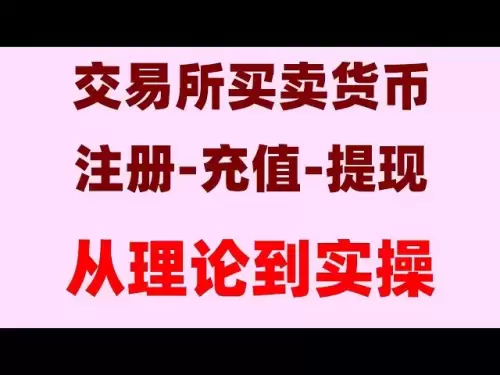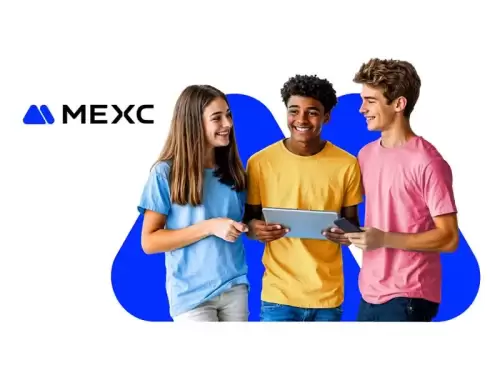 |
|
 |
|
 |
|
 |
|
 |
|
 |
|
 |
|
 |
|
 |
|
 |
|
 |
|
 |
|
 |
|
 |
|
 |
|
隨著區塊鏈技術的發展,可擴展性和可編程性仍然是主要的挑戰,尤其是對於採用UTXO模型的區塊鏈而言。

As blockchain technology continues to develop, scalability and programmability remain crucial challenges, especially for blockchains that adopt the UTXO model. Among the emerging layer-one public blockchains, Kaspa stands out with its high throughput achieved by the BlockDAG structure and the GHOSTDAG protocol. However, Kaspa, like Bitcoin, faces limitations in terms of native smart contract functionality, a strength of account-based chains like Ethereum.
隨著區塊鏈技術的不斷發展,可擴展性和可編程性仍然是至關重要的挑戰,尤其是對於採用UTXO模型的區塊鏈而言。在新興的一層公共區塊鏈中,卡巴(Kaspa)脫穎而出,其較高的吞吐量是由塊狀結構和鬼影協議實現的。但是,Kaspa與比特幣一樣,在本地智能合同功能方面面臨局限性,這是以太坊等基於帳戶的鏈的優勢。
To address this problem, the Kaspa ecosystem has been exploring several Layer 2 (L2) solutions, including Sparkle, Igra L2, and Kasplex L2. While Sparkle is still in the theoretical stage and Igra L2 is under development, our analysis will focus on Kasplex L2 as the closest to mature implementation.
為了解決這個問題,Kaspa生態系統一直在探索幾層(L2)解決方案,包括Sparkle,Igra L2和Kasplex L2。儘管Sparkle仍處於理論階段,而IGRA L2仍在開發中,但我們的分析將集中在Kasplex L2上是最接近成熟實施的。
Kasplex L2 is a second-layer scaling solution that keeps the first-level chain responsible for transaction ordering and data availability, shifting the computational load to the second layer. In this design, Kaspa's first-level chain, which uses the UTXO model and has a throughput of 10 BPS, determines the standard order of transactions and ensures that its data is accessible to everyone, while Kasplex L2 executes the Ethereum Virtual Machine (EVM) bytecode to perform smart contract functions.
Kasplex L2是第二層縮放解決方案,它使第一級鏈負責交易順序和數據可用性,將計算負載轉移到第二層。在此設計中,使用UTXO型號的Kaspa的第一級鏈條,其吞吐量為10 bps,確定了交易的標準順序,並確保每個人都可以訪問其數據,而Kasplex L2則執行以太坊虛擬機(EVM)bytecode來執行智能合約功能。
The core mechanism of Kasplex L2 is to embed EVM bytecode in the payload of Kaspa primary chain transactions. This process can be divided into the following steps:
Kasplex L2的核心機制是將EVM字節嵌入Kaspa主要鏈交易的有效載荷中。此過程可以分為以下步驟:
* Transaction submission: A user submits a transaction to the Kaspa primary chain, where the payload contains EVM bytecode. For example, the payload may encode a call to the HelloWorld() smart contract function.
*事務提交:用戶將事務提交給Kaspa主鏈,有效載荷包含EVM字節碼。例如,有效載荷可以編碼呼叫到Helloworld()智能合約功能。
* First-level chain ordering: Kaspa's BlockDAG orders transactions within its DAG structure, providing a deterministic transaction sequence.
*第一級鏈排序:Kaspa的BlockDag訂單在其DAG結構內交易,提供確定性的交易序列。
* Layer 2 execution: Kasplex L2 runs as an indexer, scanning the payload transactions on the primary chain, extracting the EVM bytecode, executing it in the specified order, and updating its state. Invalid or conflicting transactions (such as transactions attempting to double-spend) will be discarded.
*第2層執行:Kasplex L2作為索引器運行,掃描主鏈上的有效載荷交易,提取EVM字節碼,以指定的順序執行並更新其狀態。將丟棄無效或衝突的交易(例如試圖進行雙重支付的交易)。
Transaction submission mechanism
交易提交機制
Kasplex L2 supports two transaction submission methods, each having different effects:
Kasplex L2支持兩種交易提交方法,每種都有不同的影響:
* Canonical Submission: Transactions are submitted directly to L1 through Kaspa-compatible wallets. This method does not require relay nodes and complies with the decentralization principle of the blockchain system.
*規範提交:交易通過兼容Kaspa的錢包直接提交給L1。該方法不需要繼電器節點,並且符合區塊鏈系統的權力下放原理。
* Proxied Submission: Transactions are submitted through a relayer to be compatible with EVM tools like MetaMask. The relayer forwards the transaction to Kaspa L1 to ensure that it is recorded before being processed by L2. This approach prioritizes user convenience but introduces a reliance on relayers.
*代理提交:交易是通過接送器提交的,與MetAmask等EVM工具兼容。接送器將交易轉發給Kaspa L1,以確保在通過L2處理之前對其進行記錄。這種方法優先考慮用戶的便利性,但介紹了對接送器的依賴。
The proxy submission mechanism ensures atomicity by requiring all second-layer transactions to be anchored on the L1 chain. If a transaction is generated on L2 but has not yet been recorded on the primary chain, the relayer will submit it to the L1 chain for confirmation. This design prevents "native" L2 transactions that bypass the L1 chain consensus and avoids potential security risks.
代理提交機制通過要求將所有第二層交易固定在L1鏈上來確保原子。如果在L2上產生了交易,但尚未在主要鏈上記錄,則接力桿將其提交給L1鏈以進行確認。該設計阻止了繞過L1鏈共識並避免潛在安全風險的“本機” L2交易。
The following figure illustrates the two submission paths:
下圖說明了這兩個提交路徑:
Canonical path: Wallet → Kaspa L1 → Kasplex L2
規範路徑:錢包→Kaspa L1→Kasplex L2
Proxy path: MetaMask → Relay → Kaspa L1 → Kasplex L2
代理PAT:MetAmask→Raye→Kaspa L1→Kasplex L2
As you may notice, the transaction is actually finalized on L1 before being interpreted by the L2 indexer. This is exactly how Kasplex L2 works: L1 finalizes the data first, and then L2 reads the transaction and updates the state.
您可能會注意到,在由L2索引器解釋之前,該交易實際上是在L1上完成的。這正是Kasplex L2的工作方式:L1首先最終完成數據,然後L2讀取交易並更新狀態。
To better understand Kasplex L2, we can compare it with Bitcoin Inscriptions (specifically BRC-20), another approach to expanding the programmability of UTXO model blockchains. Both aim to integrate the strengths of the first-level chain—transaction ordering and data availability—while shifting computational complexity to the second layer, but they differ in their implementation and goals.
為了更好地了解Kasplex L2,我們可以將其與比特幣銘文(特別是BRC-20)進行比較,這是擴展UTXO模型區塊鏈的可編程性的另一種方法。兩者都旨在整合第一級鏈的優勢 - 交易訂購和數據可用性,同時將計算複雜性轉移到第二層,但它們的實施和目標有所不同。
Similarities
相似之處
Both Kasplex L2 and BRC-20 embed useful data in primary chain transactions. BRC-20 leverages Bitcoin's Tapscript (enabled by the SegWit upgrade) to store token metadata, typically in a three-step process: "commit (data hash) → reveal (reveal, data itself) → spend (spend, token transfer)."
Kasplex L2和BRC-20都嵌入了初級鏈交易中的有用數據。 BRC-20利用比特幣的Tapscript(由SEGWIT升級啟用)存儲令牌元數據,通常在三步的過程中:“ commit(data hash)→揭示(揭示,數據本身)→支出(支出(支出,代幣傳輸)”。
In contrast, Kasplex L2 embeds EVM bytecode into the payload of Kaspa L1 transactions. For example, if we want to execute a HelloWorld() function in a smart contract, the compiled bytecode will be put into the transaction payload. This structure enables L2 to perform the same functions as a standard EVM chain.
相比之下,Kasplex L2將EVM字節嵌入Kaspa L1交易的有效載荷中。例如,如果我們想在智能合約中執行helloworld()函數,則編譯字節碼將放入事務有效載荷中。該結構使L2能夠執行與標準EVM鏈相同的功能。
Moreover, both rely on the first-level chain for ordering operations. For BRC-20, the Bitcoin blockchain is used to order token transfers, while Kasplex L2 leverages Kas
此外,都依靠一級鏈來訂購操作。對於BRC-20,比特幣區塊鏈用於訂購令牌轉移,而Kasplex L2則使用KAS
免責聲明:info@kdj.com
所提供的資訊並非交易建議。 kDJ.com對任何基於本文提供的資訊進行的投資不承擔任何責任。加密貨幣波動性較大,建議您充分研究後謹慎投資!
如果您認為本網站使用的內容侵犯了您的版權,請立即聯絡我們(info@kdj.com),我們將及時刪除。
-

- 極端看漲的情緒命中了加密貨幣:機會還是設置?
- 2025-05-19 20:05:13
- 加密貨幣市場已經進入了看漲情緒的激烈階段,在分析師和投資者中都引發了樂觀和謹慎。
-

- 加密鯨魚正在傾倒Dogecoin(Doge)和Shiba Inu(Shib)購買懲罰者硬幣($ pun)預售
- 2025-05-19 20:05:13
- 加密貨幣市場在第二季度2025年迅速發展,鯨魚也是如此。
-

-

- Ripple與第一個區塊鏈付款客戶擴大阿聯酋的存在
- 2025-05-19 20:00:32
- 這一發展是在Ripple成為2025年3月從DFSA獲得許可證的第一批啟用區塊鏈的付款提供商兩個月之後。
-

-

-

- MEXC推出比特披薩日幸運之輪活動
- 2025-05-19 19:50:13
- MEXC是一家領先的全球加密貨幣交易所,已宣布啟動披薩日幸運之輪活動,以慶祝比特幣披薩日。
-

- Solaxy成為Solana最受搜索的L2預售項目
- 2025-05-19 19:50:13
- 這種興趣的激增反映了Solaxy創新方法的興奮,以提高Solana區塊鏈的可擴展性和效率。
-






























































